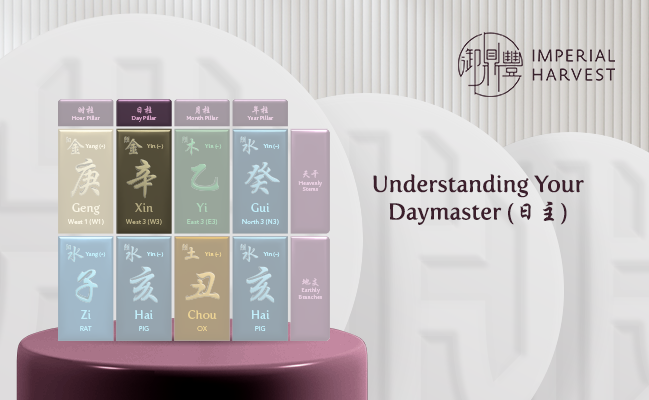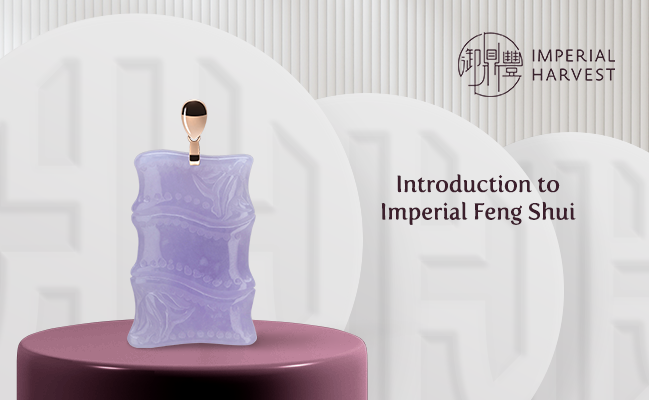

Posted by Imperial Harvest on 18 August 2023
Five Elements (五行) in Chinese Metaphysics
Estimated Reading Time: 5 mins
The Five Elements, known as Wu Xing (五行), is a concept widely used in many traditional Chinese fields of study. These Five Elements — Wood (木), Fire (火), Earth (土), Metal (金), and Water (水) — are associated with the concepts of Yin and Yang and other aspects of Chinese metaphysics, such as the four seasons, five directions and the Four Phenomena.
Having emerged from the latter years of the Han dynasty (25 to 220 AD), the Five Elements Theory (五行学说) marked the foundation of our understanding of the universe. This ancient system was used in interpreting the interactions and relationships of the natural world, appearing in subjects of music, Feng Shui, military strategy, traditional medicine and cultural arts. As a concept rooted in the principles surrounding Chinese metaphysics and philosophy, the Five Elements Theory formed the foundational study of systems in Chinese history.
In Chinese metaphysics, the Five Elements are thought to have originally referred to the five major planets — Jupiter, Saturn, Mercury, Mars and Venus. The Five Elements were also associated with the Sangang Wuchang (三纲五常), or the Five Constant Regulations in Chinese culture.
History of the Five Elements Theory
The Five Elements theory refers to a system of interconnected and balanced movements rather than literal elements of reality. This theory was introduced as early as the Spring and Autumn Period (770 to 481 BC), proposing the concept of mutual generation and restraint among the five elements in a cyclical sequence of wood, fire, earth, metal, and water.
Historical records acknowledged the five elements as fundamental to the formation of the natural world, reflecting its inherent structural relationships. The term “Five Elements” initially appeared in Shang Shu《尚书》, denoting the specific qualities attributed to each of the elements.
The origins of the Five Elements Theory may have several backgrounds, with its core concepts further developed during the late Shang dynasty with the establishment of cardinal directions and their mathematical transformations in subsequent periods. The emergence of the “Wucai Theory” (五彩) in the late Western Zhou Dynasty (1045 BC to 771 BC) contributed to the development of the Five Elements concept.
What are the Five Elements?
The Five Elements encompass more than mere representations of physical substances; they also convey diverse attributes and qualities. Within Chinese metaphysics, these elements serve as classifications for tangible objects and abstract concepts. Elements and their combinations can be applied to categorise various entities, underscoring the intricate relationships in all facets of existence. For example, each element is associated with a specific direction, heavenly creature, colour, and organ, amongst other categories.
Each of the Five Elements has unique characteristics and attributes:
Wood (木)
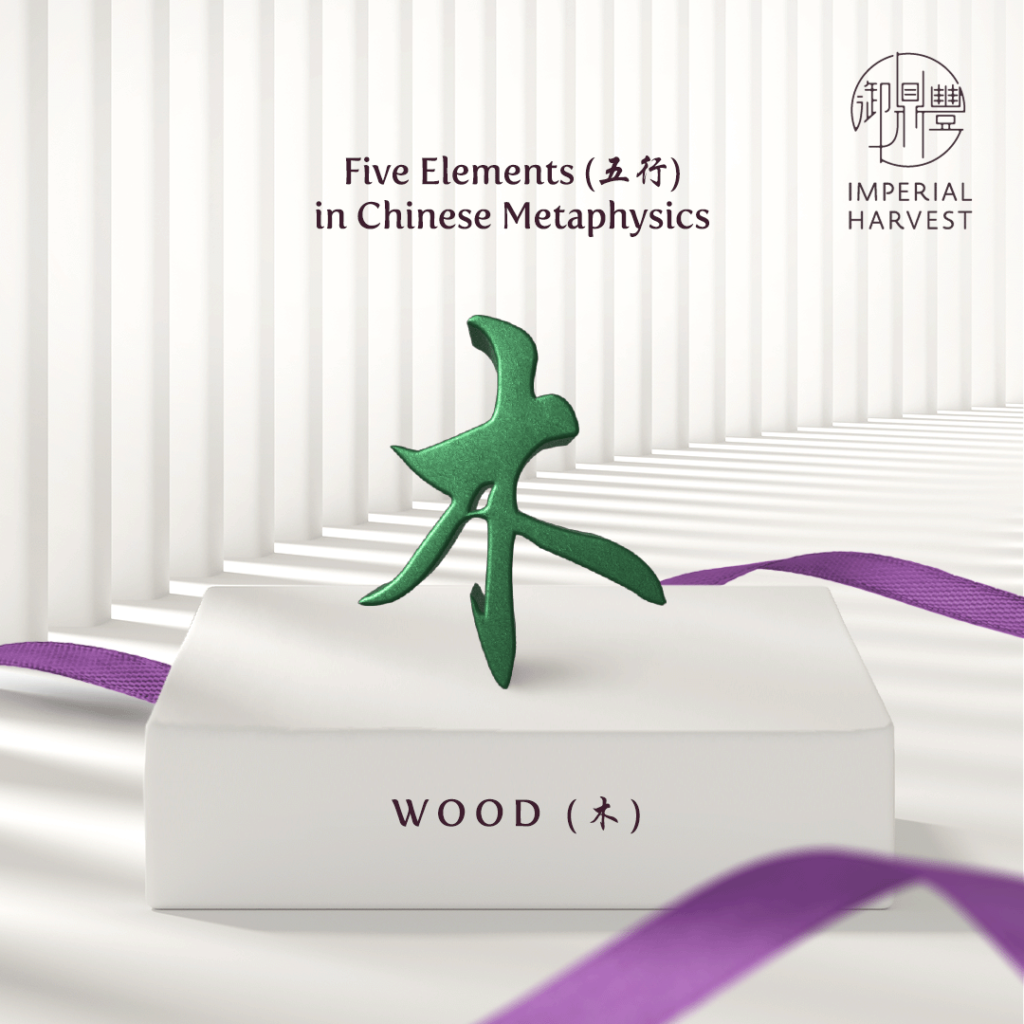
Characteristics of Wood Element
Wood is linked with the realm of plants, encompassing a range of vegetation, from tall and robust trees to smaller herbaceous plants and shrubs. Much like the upward growth of trees reaching towards the sky, the wood element signifies the themes of upward progression and adaptability.
This elemental representation of wood is closely aligned with the Spring season, embodying the concepts of growth, expansion, and vitality.
The Wood element is connected to the Minor Yang in the Four Phenomena, represented by the Green Dragon, and aligned with the East compass direction.
In the context of Bazi, the Wood element further breaks down into its Yin and Yang components: Yi Wood and Jia Wood, respectively.
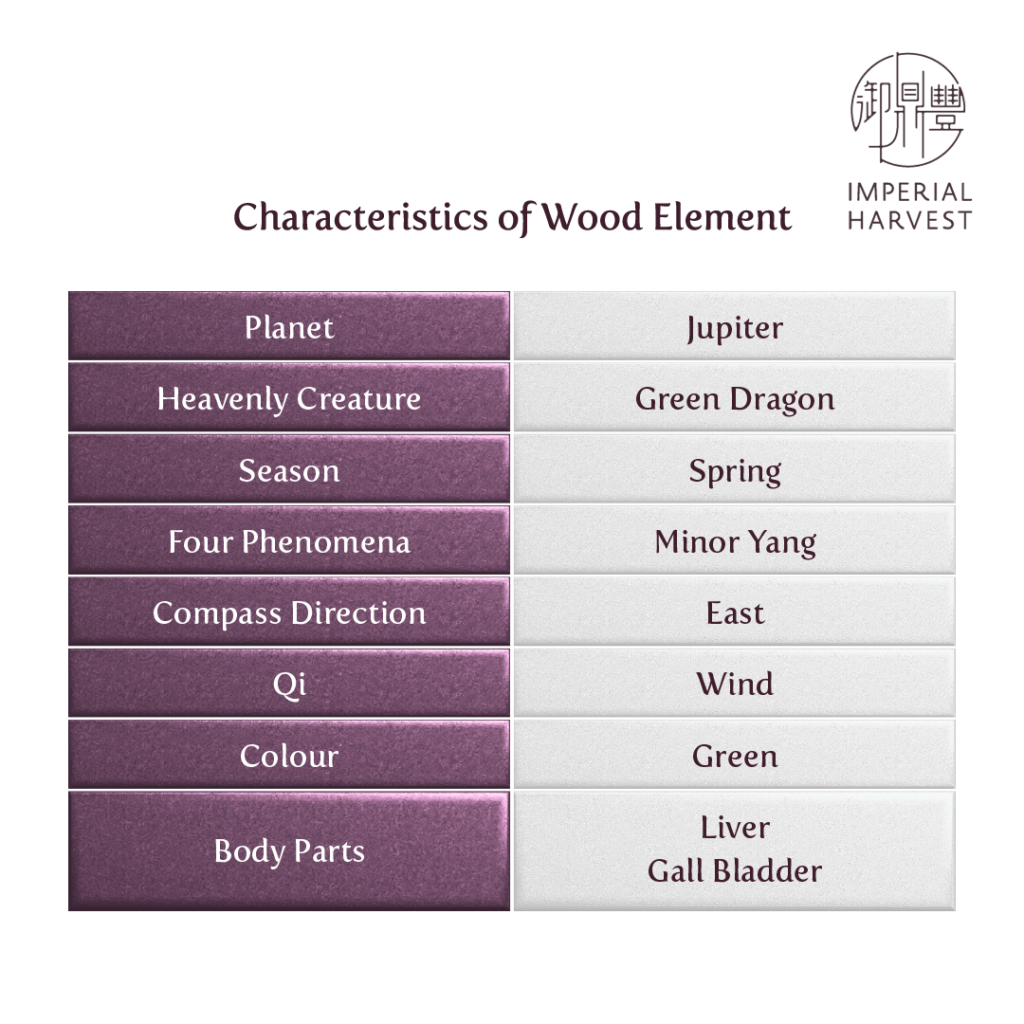
Fire (火)
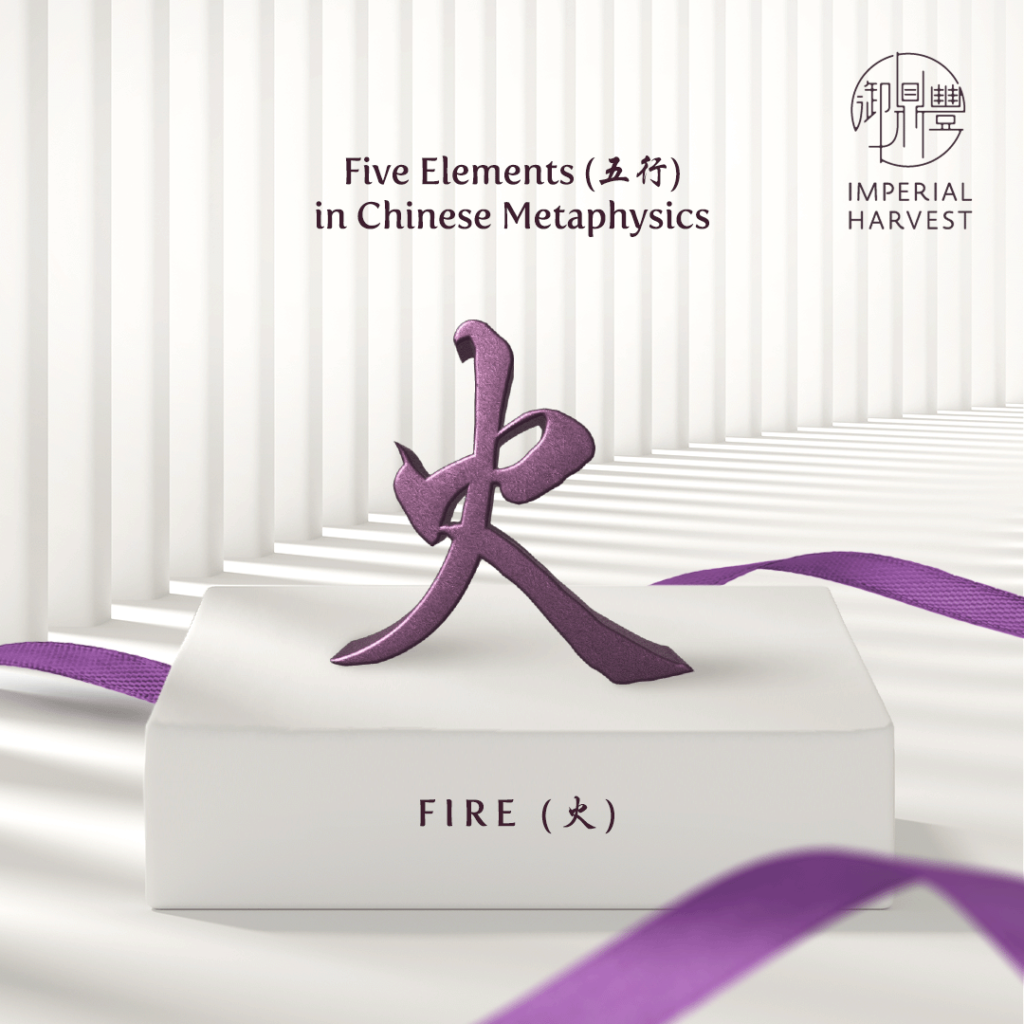
Characteristics of Fire Element
Fire embodies the concepts of transformation, passion, dynamism, and warmth — underscoring its inherently transformative characteristics and ability to ignite change.
Its strong association with the summer season highlights its capacity to both consume and radiate light and heat.
The element of Fire is closely linked to the Major Yang energy within the Four Phenomena, personified by the Red Phoenix, and aligns with the South compass direction.
In the realm of Bazi, the Fire element further differentiates into its distinct Yin and Yang aspects: Ding Fire and Bing Fire, respectively.
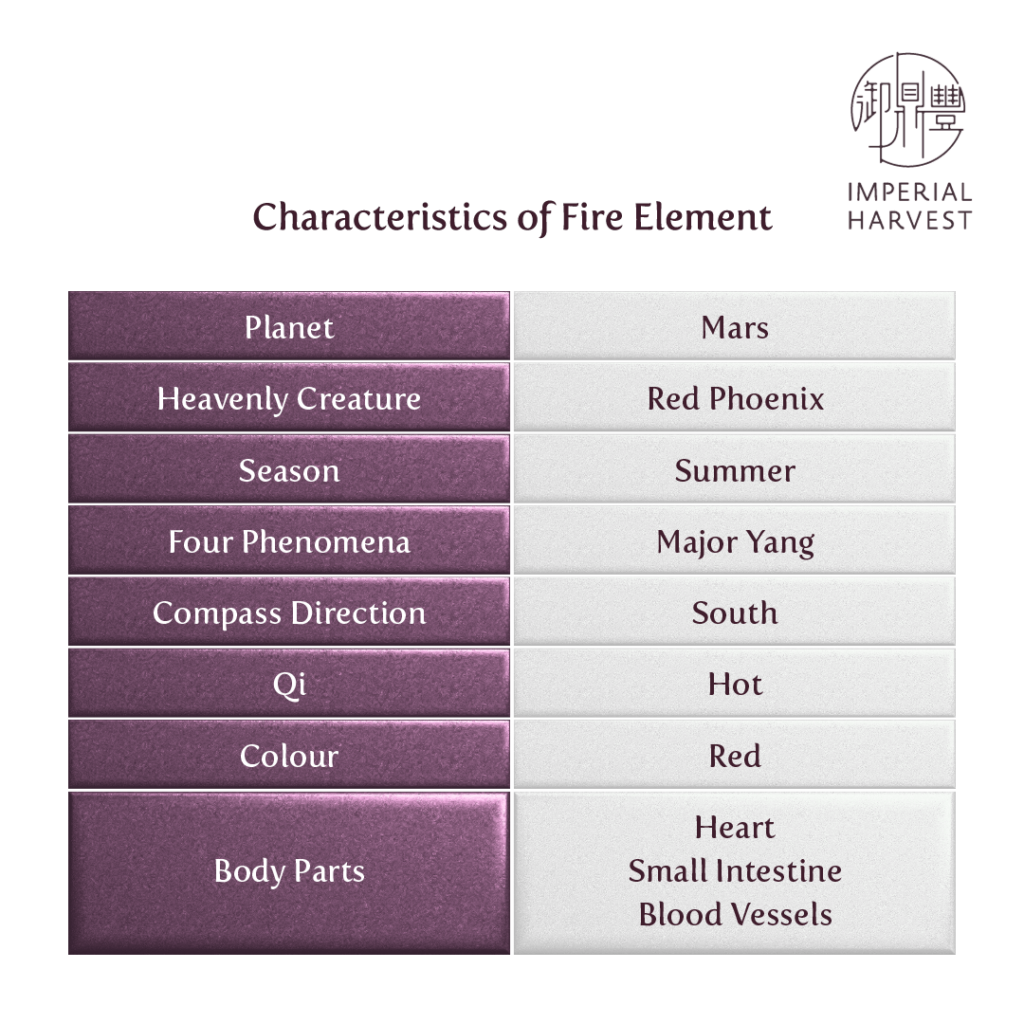
Earth (土)

Characteristics of Earth Element
Earth is closely linked to terrestrial landscapes, encompassing geographical features like mountains, riverbanks, and arable land. This element is associated with stability, transformation, nourishment, and groundedness.
It embodies qualities of nurturing and sustenance, aligning with attributes of harvest and abundance, aligning with the latter portion of the summer season. Functioning as a stabilising force, the Earth element offers a foundation for growth, acting as a pivotal point for maintaining stability.
The element of Earth is related to the centre of the compass, and the intersection of the cardinal directions. It is personified by the Yellow Dragon.
In the art of Bazi, Earth is broken down into its Yin and Yang aspects — Ji Earth and Wu Earth, respectively.
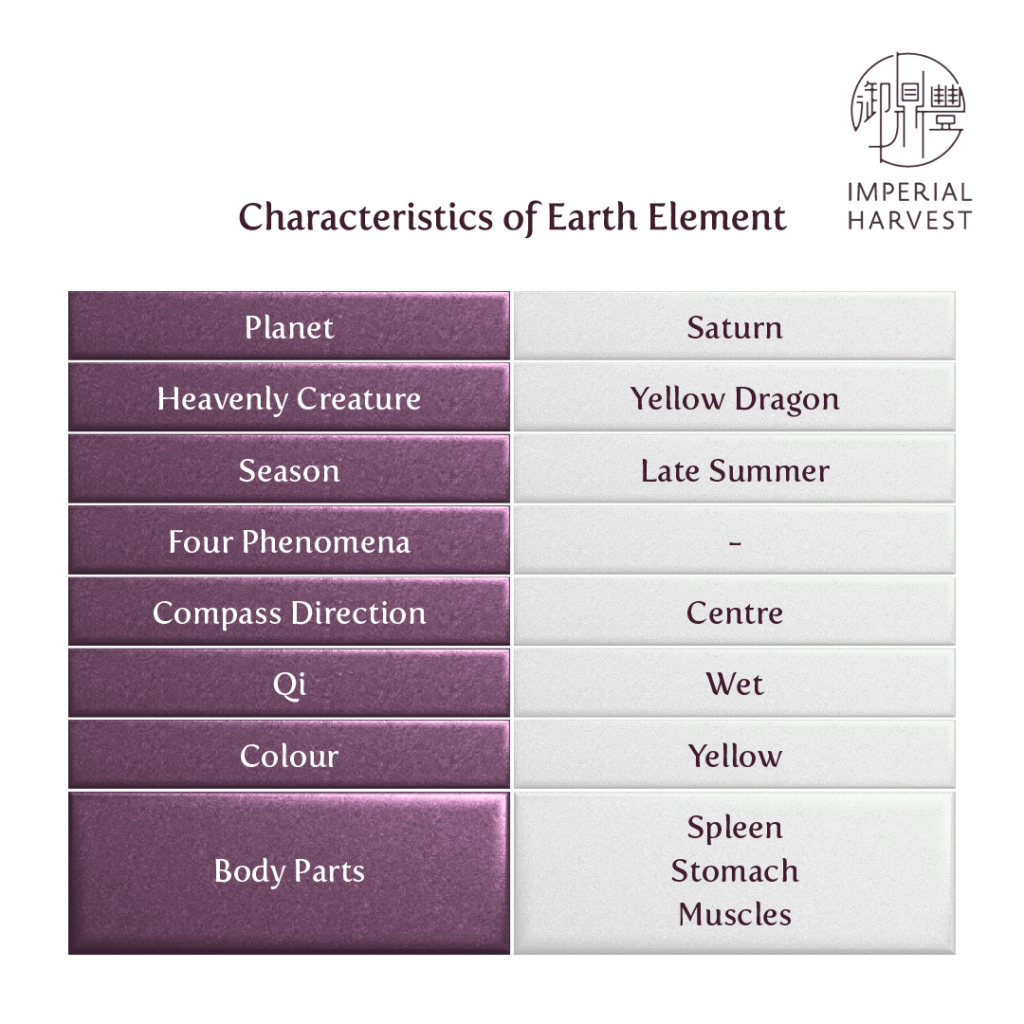
Metal (金)
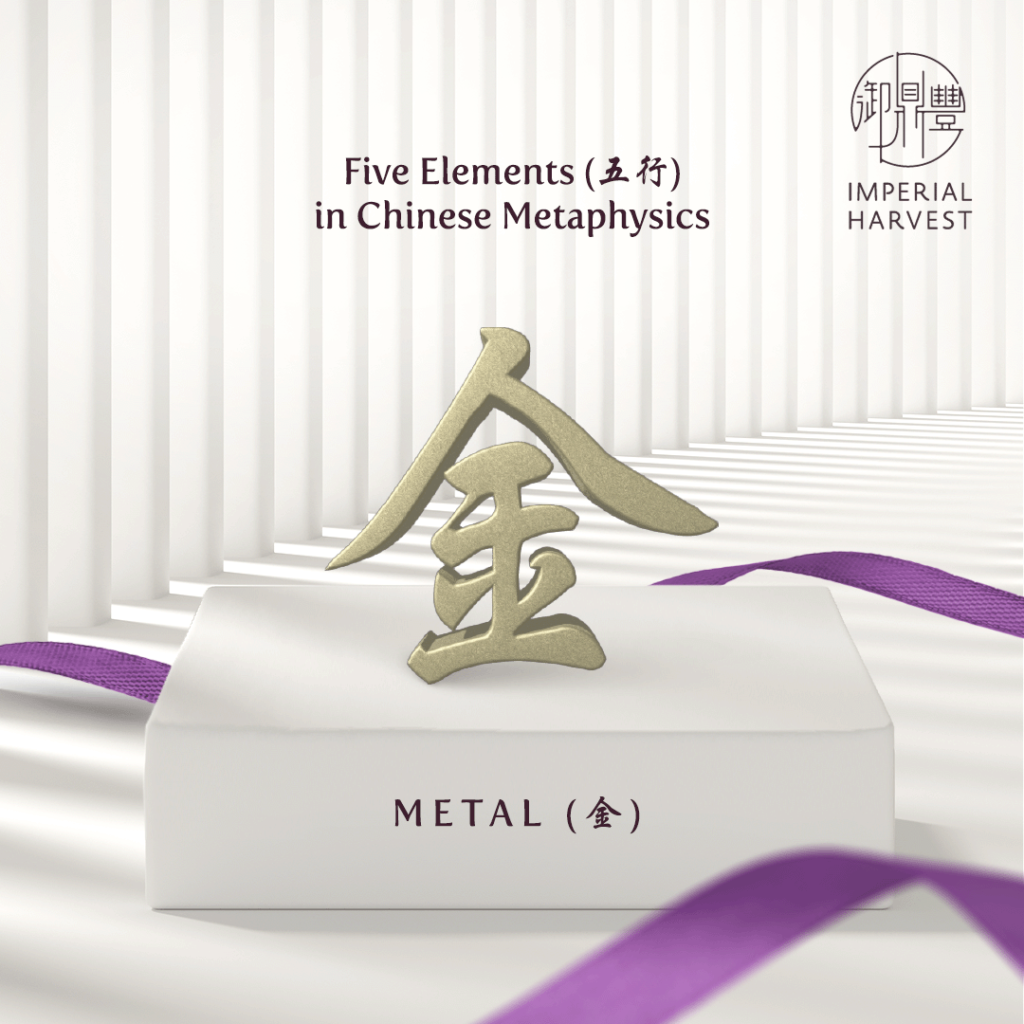
Characteristics of Metal Element
Metal is affiliated with a range of metallic materials, encompassing items like weaponry and jewellery. Within the Five Elements theory, the Metal element embodies qualities of clarity, strength, precision, and mental sharpness.
Its connection with these attributes parallels the autumn season. Comparable to refining and shaping metals, this element symbolises the concept of personal refinement through experiences and challenges, analogous to the transformative journey of metals being purified and moulded.
The Metal element is linked to the Minor Yin in the Four Phenomena, aligned with the West compass direction, and embodied by the White Tiger.
Within the framework of Bazi, the Metal element is classified into its distinct Yin and Yang manifestations: Xin Metal and Geng Metal, respectively.
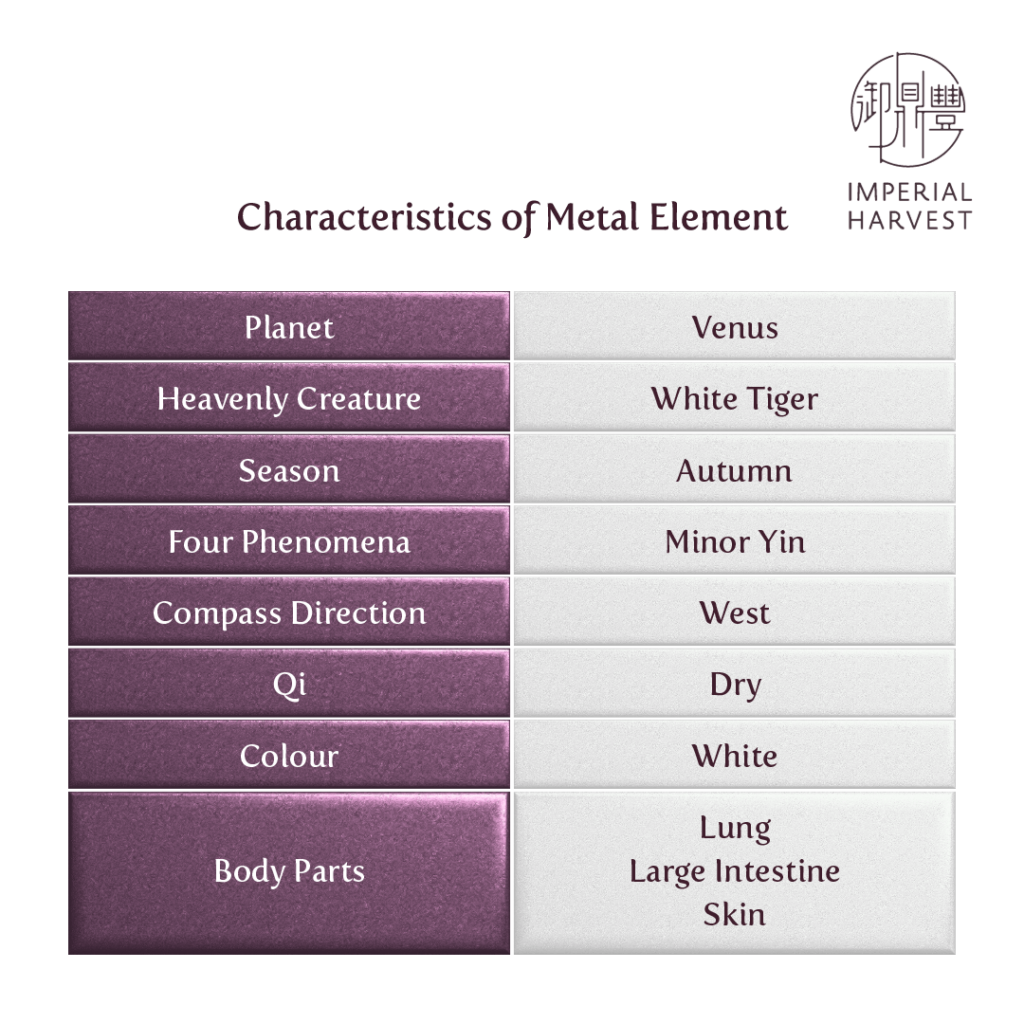
Water (水)
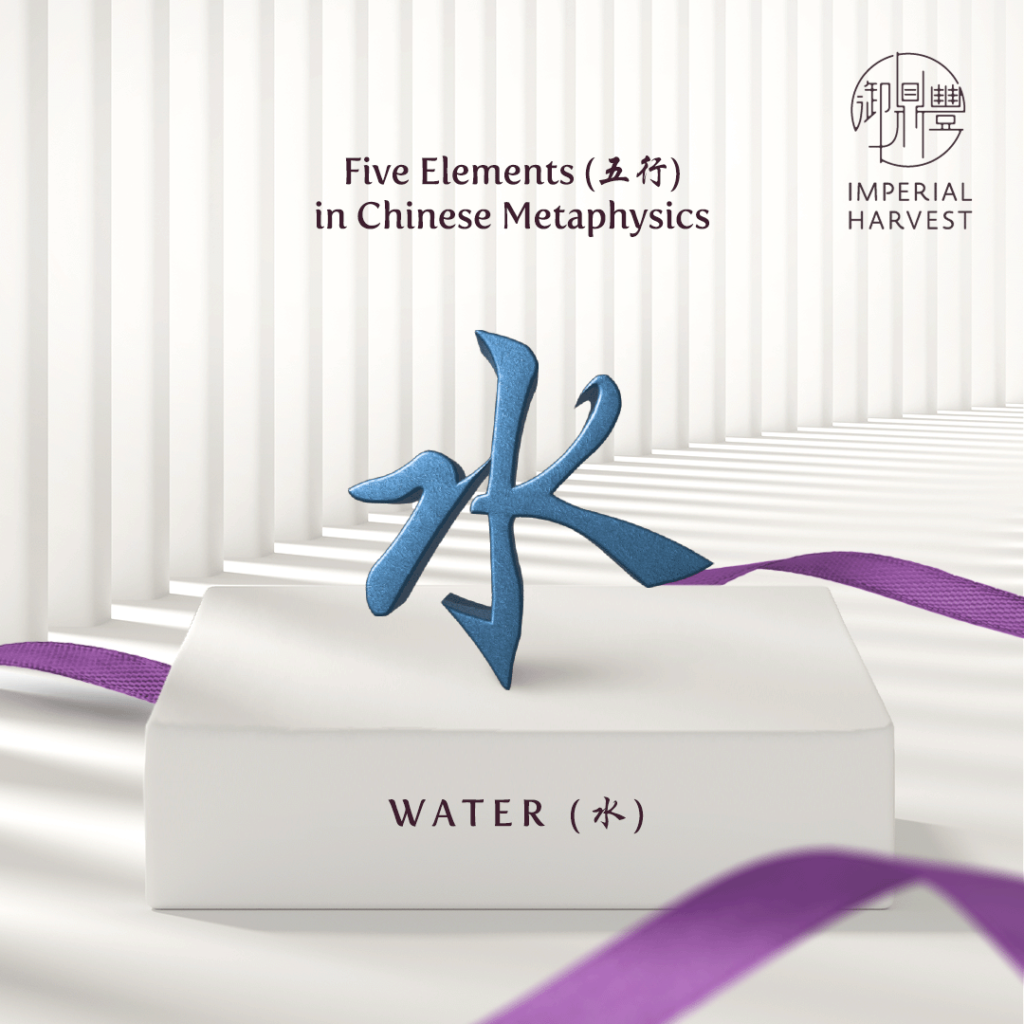
Characteristics of Water Element
Lastly, Water is associated with bodies of water, from rivers and lakes to rainfall and the dewdrop on plants. It embodies observation, adaptability, fluidity, and intuition. It corresponds to the winter season, representing a time of rest and reflection.
Aligning with the Major Yin, the element of Water also corresponds with the North compass direction and is represented by the Black Tortoise.
In the context of Bazi, the Water element is categorised into its separate Yin and Yang components: Gui Water and Ren Water, respectively.

What are the Five Element Producing and Controlling Cycles?
This cyclical relationship of the Five Elements emphasises the importance of balance and harmony. When the Five Elements are in balance, the natural world and human existence are thought to be in harmony. In contrast, imbalances are thought to lead to disharmony and disruption.
According to traditional teachings, the Five Elements are intricately linked through cycles of interactions. In this article, we will be exploring the production cycle (相生), which is often referred to as a “mother-child” cycle, and the controlling cycle (相克), which is known as a “grandparent-grandchild” cycle. Both cycles can be examined in their forward or reverse sequences to comprehensively understand their dynamics.
What is The Producing Cycle? (相生)
In the traditional framework of the Five Elements theory, the producing cycle is a cyclical pattern where each element, acting as a “parent, contributes to the enrichment, nourishment and strengthening of the subsequent element, which serves as its “child”.
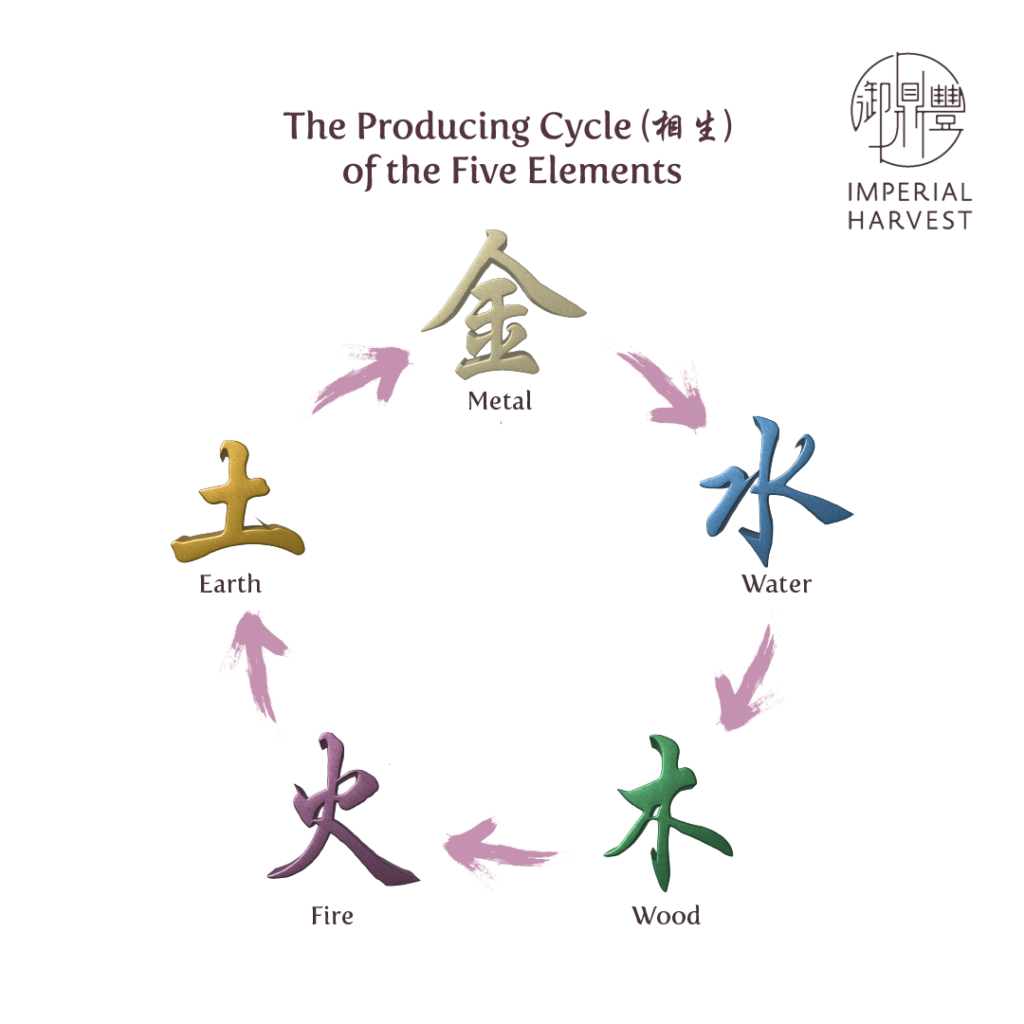
- Wood produces Fire (木生火): The inherent energy within Wood, associated with growth and expansion, generates thermal energy. Through consistent friction and intense rubbing of wood, this process results in the creation of flames, which, when supplied with additional wood as fuel, can develop into Fire.
- Fire produces Earth (火生土): Fire, characterised by its thermal energy generated from various sources, can reach high temperatures. When applied intensely, Fire consumes Wood, forming ashes, which return to the ground, nourishing and creating Earth.
- Earth produces Metal (土生金): Metal was believed to reside within Earth’s soil, possessing the capacity to gather and accumulate soil particles, ultimately forming mountains. Within mountains are significant mineral veins, forming a correlation between Earth giving rise to Metal.
- Metal produces Water (金生水): Various interpretations elucidate the relationship between metal and water. A common approach highlights that condensation occurs when metal surfaces cool down, resulting in the collection of water.
- Water produces Wood (水生木): The gentle and nurturing energy of water contributes to the flourishing of plant life. This relationship signifies that water’s attributes of nourishment and support enable the growth of plants, which subsequently results in the generation of wood.
What is The Controlling Cycle? (相克)
In contrast to the Producing cycle, the controlling cycle denotes the ability of each element to suppress, control, dominate, overcome, or weaken another element. This “grandparent-grandchild” relationship refers to the controlling cycle, where one element restricts or properly controls another.
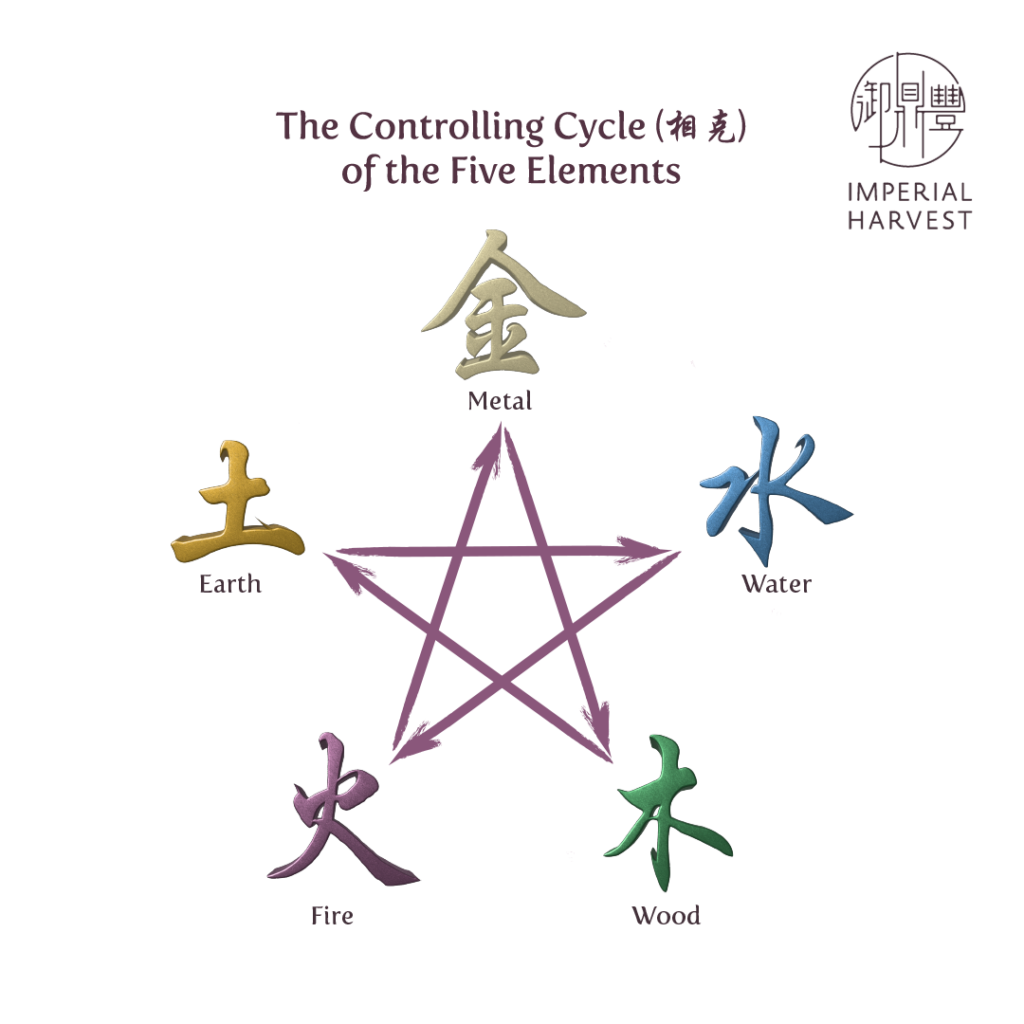
The interactions between elements in the controlling cycle of the Five Elements theory are explained as follows:
- Metal controls Wood (金克木): Metal is considered more rigid when compared to Wood’s softness. This characteristic allows Metal to overcome Wood. An illustrative example is that metal tools can effectively cut down plants and trees.
- Wood controls Earth (木克土): Wood’s ability to overcome Earth is attributed to its concentrated and focused growth. Plants condense energy within a seed to sprout and grow, extracting nutrients from the soil, thereby restricting the Earth.
- Earth controls Water (土克水): The solidity of Earth prevails over the fluidity of water. Earth’s capacity to provide foundation and stability, such as mud or concrete embankments, can effectively mitigate the impact of tsunamis and floods.
- Water controls Fire (水克火): Water’s mass or abundance prevails over the isolated nature of fire. A significant amount of water can extinguish fire due to its capacity to absorb heat and reduce the fire’s energy.
- Fire controls Metal (火克金): Fire’s intense heat is described as overcoming the resolute nature of metal. For example, the heat from a powerful fire is capable of melting tough metal ores.
Applications of Five Elements in Chinese Metaphysics
The Five Elements constitute a significant concept in Chinese metaphysics and serve as a fundamental cornerstone within the intricate Bazi (八字) system. Within the realm of Bazi analysis, each of the 10 Heavenly Stems is linked to an elemental attribute and a Yin-Yang polarity.
Classifying industries and professions according to the Five Elements facilitates an enhanced comprehension of their distinct attributes and affiliations. This proves particularly useful in Bazi readings, where the Five Elements are employed to unveil concealed potentials and influences in an individual’s life and career. By identifying the elemental correlations and interactions inherent in particular industries or professions, practitioners of Bazi can offer valuable insights into career selections, compatibility considerations, and additional elements contributing to achievement. This understanding empowers individuals to make well-informed choices and harmonise their trajectories with the pursuit of success.
Industries related to each of the Five Elements are as follows:
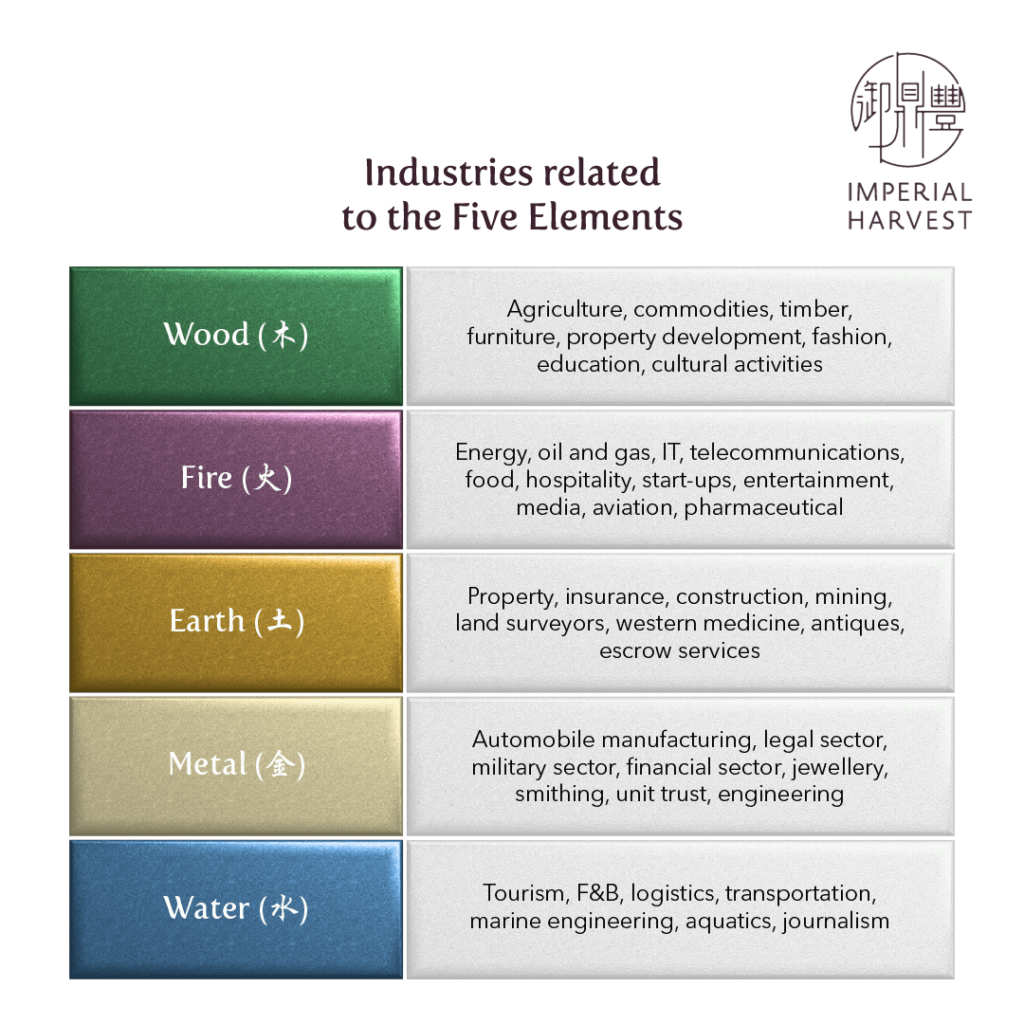
Imperial Harvest Bazi Readings
At Imperial Harvest, each journey begins with a Bazi consultation. Through the utilisation of profound insights and principles derived through generations of expertise, Master David adeptly adjusts these well-established principles to align with the modern socio-economic landscape.
Incorporating ideas originating from the Song, Ming, and Qing dynasties, Master David channels the wisdom of this multi-generational lineage to distil the Imperial Feng Shui knowledge. His application of tailored and practical solutions in the form of exceptionally refined Imperial Feng Shui treasures offers bespoke and potent solutions following the Imperial Harvest approach.
Imperial Harvest’s expert consultants are always on hand to guide you on your journey and provide you with insights to help you realise your fullest potential. Book a complimentary consultation today or contact us at +65 92301640.
We are located at
For prospective clients:Imperial Harvest402 Orchard Road
Delfi Orchard #02-07/08
Singapore 238876 For existing clients:Imperial Harvest Prestige
402 Orchard Road
Delfi Orchard #03-24/25
Singapore 238876
Most Read Articles
Get to read our life changing articles and get inspired.
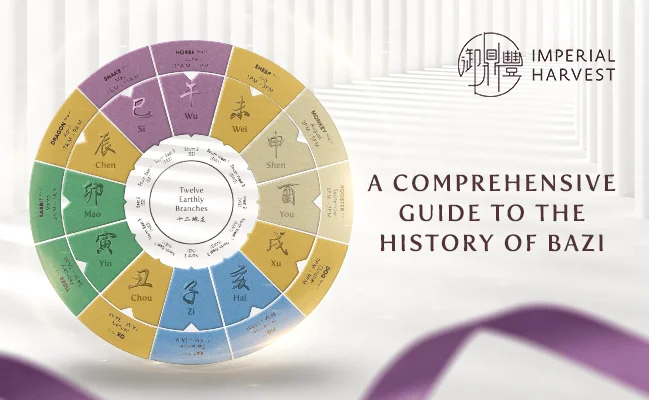
A Comprehensive Guide to the History of Bazi (八字)
Estimated Reading Time: 5 mins Bazi (八字) is often mistakenly assumed as the Chinese counterpart of western Astrology. The similarities between both systems lie in their utilisation of birth dates and time in their calculations, and the ability to be read from a tabulated chart. Where Astrology may take into account the positions of different […]

Imperial Harvest Consecration Ceremony
Estimated Reading Time: 5 mins At Imperial Harvest, each earthly treasure undergoes a series of consecration rites performed by Master David, before it is bestowed upon its blessed owner. Every aspect of these sacred Chinese anointing rituals is carefully examined and accurately represented in Master David’s blessings, reflecting Imperial Harvest’s deep respect for these esteemed […]
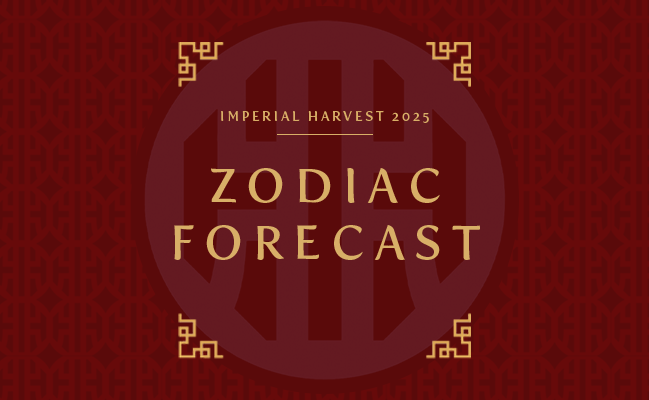
Imperial Harvest 2025 Zodiac Forecast
Estimated Reading Time: 7 mins The Year of the Wood Snake in 2025 brings a dynamic period of growth, transformation, and new beginnings. With its ambitious qualities, the Wood Snake’s influence offers unique opportunities for those who seek progress and renewal. Drawing from the time-honoured principles of Imperial Feng Shui, the Imperial Harvest 2025 Zodiac […]
